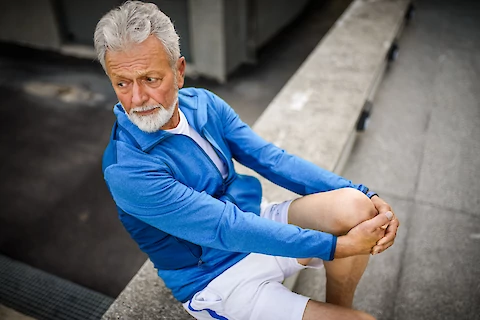
Shin splints can be a real pain, especially for seniors. This common yet often misunderstood condition can make simply walking around a challenge. But don't worry, we're here to shine a light on this tricky issue. Learning what causes shin splints, the symptoms to watch out for, and how to prevent and treat them can help you navigate this uncomfortable situation any time it arises.
What Causes Shin Splints
Shin splints are medically known as a stress syndrome of the medial tibia. They occur when there's an overburden on the shinbone as well as the connective tissues that join your muscles to the bone. The major risk factors include flat feet, improper footwear, or an abrupt increase in the intensity of physical activities. Seniors may be more prone to this condition due to age-related wear and tear, coupled with lesser flexibility.
Symptoms of Shin Splints
The main symptom to watch out for is a nagging pain in the lower leg. It's often felt along the inner part of the shinbone. It can start as a slight discomfort that intensifies over time. Sometimes, swelling in the lower leg can also be a tell-tale sign. Early detection is fundamental for seniors, as prompt treatment can prevent further complications.
Preventive Measures for Shin Splints
The key to preventing shin splints lies in taking care of your legs. Regular gentle exercises such as walking or swimming can help strengthen your leg muscles. Wearing appropriate footwear that provides good cushioning and support is another vital step. But remember, any physical activity should be increased gradually, to allow your body time to adjust. Plus, you'll want to check with your doctor before beginning a new routine.
Treatment Options for Shin Splints
When it comes to treatment, resting is one of the most effective ways to ease shin splint pain. Your doctor may recommend a brief break from weight-bearing activities. Pain relievers and ice packs can also provide temporary relief. For seniors, physical therapy that improves flexibility and strength can be particularly beneficial. In some cases, your healthcare provider might suggest using orthotics for additional foot support.
Home Care Remedies for Shin Splints
There are a few simple remedies that you can try at home to alleviate shin splint discomfort. Applying cold packs to the affected area for 15-20 minutes at a time can help reduce inflammation. Stretching exercises targeting the lower leg muscles can also be useful. Just remember to be gentle and avoid any activity that exacerbates the pain.
Manage Shin Splints With the Help of Senior Helpers Charleston
Shin splints are a manageable condition, especially when detected early. Seniors should pay particular attention to any leg discomfort and seek help if the pain persists. Prevention and treatment don't necessarily mean tedious medical procedures. Sometimes, it's as simple as wearing the right shoes or taking a relaxing ice pack break.
If you or your loved one in Charleston, James Island, Moncks Corner, Mt. Pleasant, or Daniel Island are dealing with shin splints, reach out to us at Senior Helpers Charleston. We're here to provide you with the care and guidance you need to maintain your mobility and make the most out of your golden years. Contact us today, and let's help you stride with confidence!